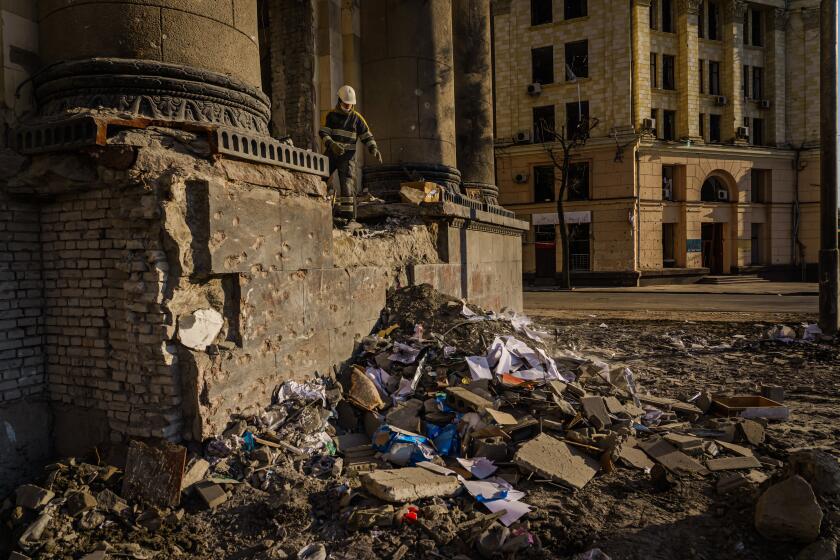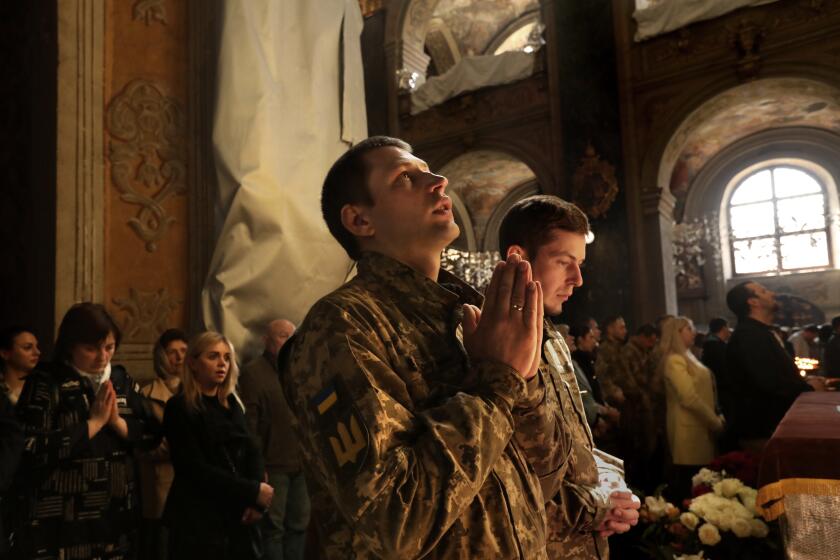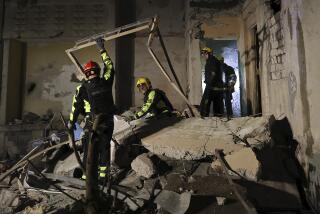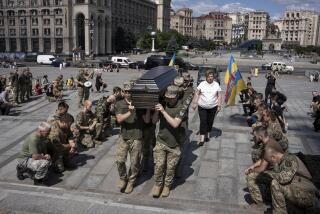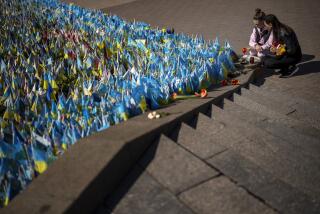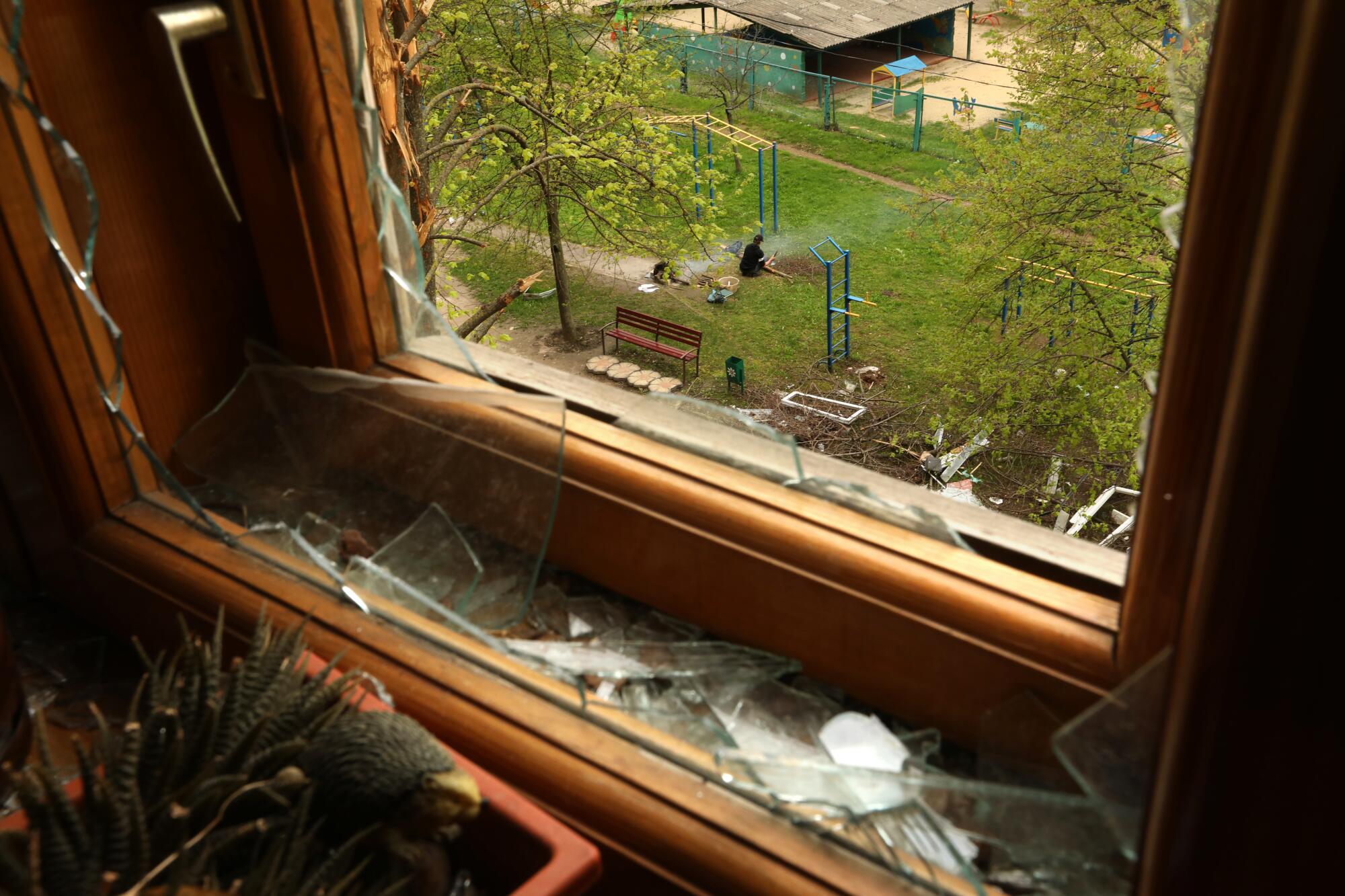
- Share via
KHARKIV, Ukraine — At some point, all shelling sites look the same. There’s the jagged-edge crater with a spray-pattern of divots gouged out by shrapnel; the gap-toothed hole where ordnance punched through a wall; the scorched remains of automobiles that happened to be passing when a missile slammed into the road. You notice the dazed pedestrians, who barely believe they’re alive, looking at the corpses of the not-so-lucky, the blood pooling around them.
From the very first moments of the Russian invasion of Ukraine, Kharkiv has been a target, its name almost at the top of the list of cities wronged in this war. Every day brings a fresh pummeling, more names and addresses in the growing litany of casualties and destruction. So far, more than 530 civilians have been killed and many more wounded, according to the United Nations. The municipality says some 2,100 buildings have been damaged.
But those terrible zoomed-out figures obscure a surprising close-up reality: namely, that the violence in this northeastern city is mostly localized, with some of the heaviest bombardments in Europe since World War II hitting one part of Kharkiv, a district called Saltivka, while just a few miles up the road people are out walking their dogs, lounging in the park or shopping.
As long as you’re not in that district, you stand a reasonably good chance of having a relatively normal day. In other words, if Kharkiv is the target, Saltivka is the bull’s-eye.
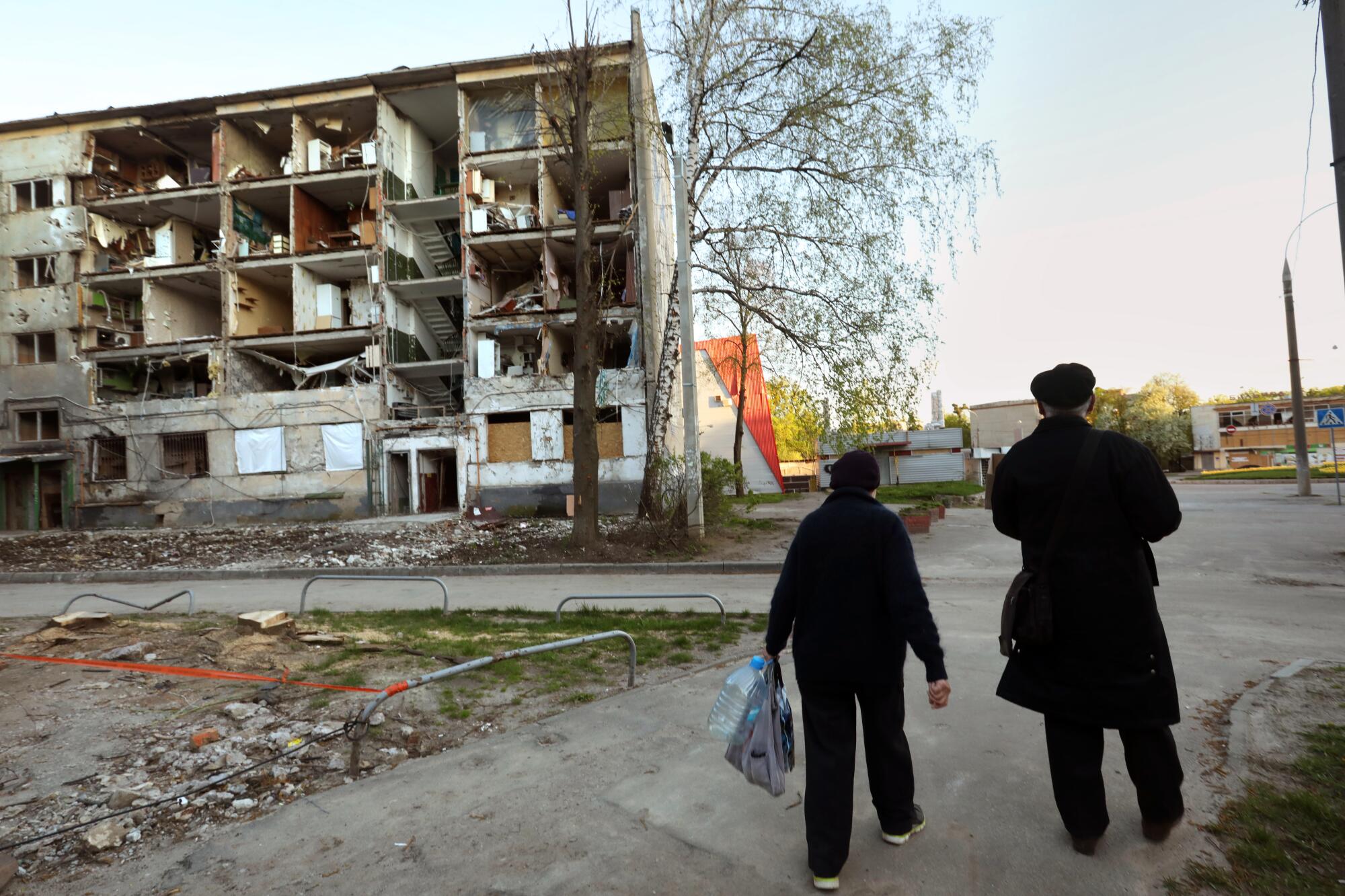
Saltivka sits on Kharkiv’s northeast flank, the area closest to Russian troops deployed only a few miles away. Designed as a bedroom district, it housed anywhere from 500,000 to 800,000 people at its height, more than one-third of the city’s population.
For those who remain, the constant back-and-forth between the Russian army and the Ukrainian artillery hidden among the brutalist Soviet-era high-rise towers has forced upon them a mostly subterranean existence, whose complications go well beyond bedding down in a shelter. Everyday life — tasks such as cooking, showering — now resembles a macabre, never-ending camping trip that an artillery round could end at any moment.
“It’s very hard to live here, but where would I go?” said Natasha, a 62-year-old pensioner who only gave her first name for reasons of safety.
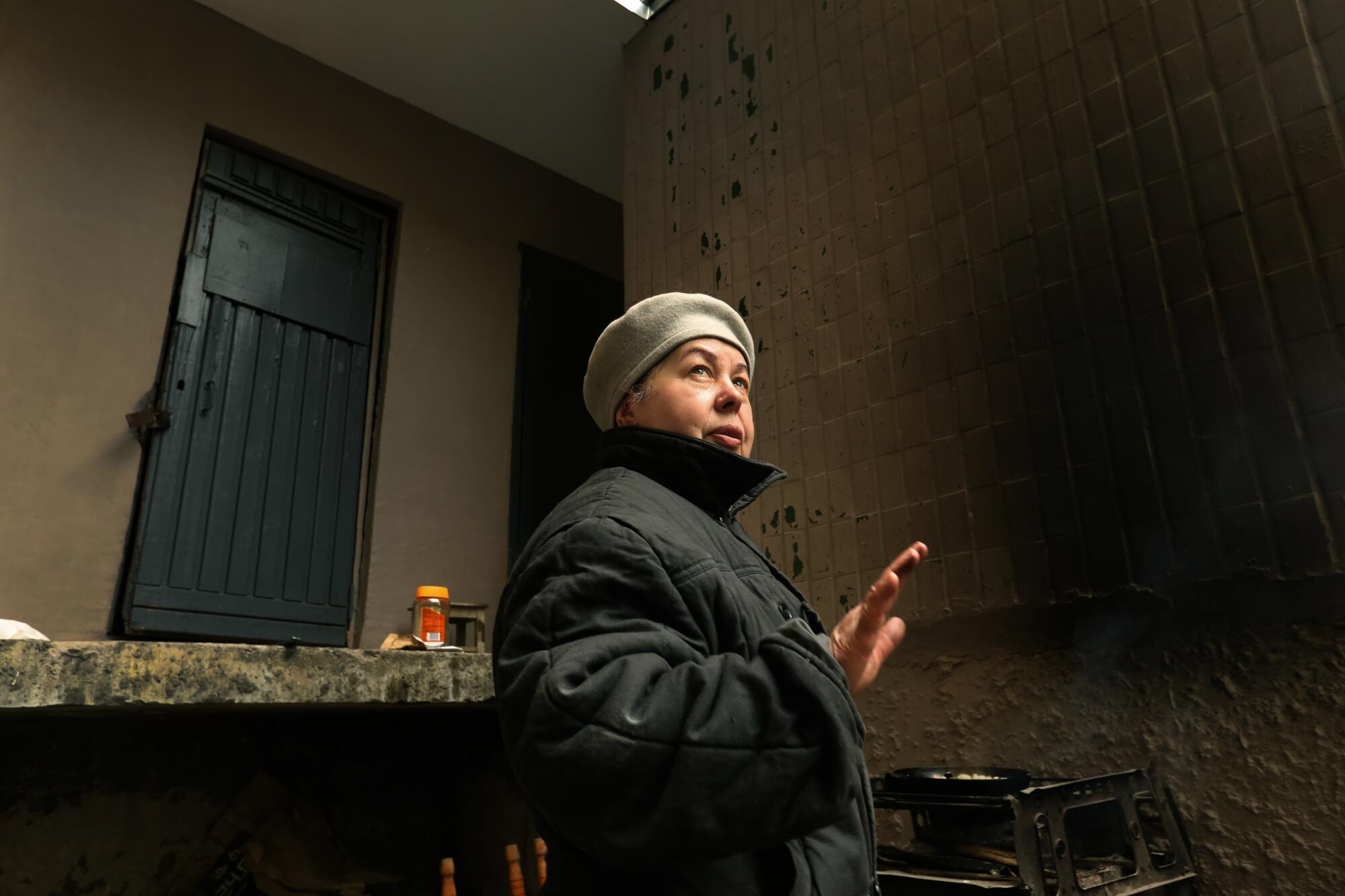
She stood in a recessed corner outside her apartment building, wearing a dark gray coat and a white woolen cap and preparing lunch — rice and chicken — al fresco. A saucepan with no handle sat on the skeletal remains of an oven. A burning pile of wood she had culled from splintered window frames and shutters served in lieu of a gas flame.
For weeks there has been no water or electricity. Volunteers risk the shelling to deliver water bottles, food and power banks to charge up phones. Although she could sleep in the nearby subway station along with hundreds of others from the neighborhood, Natasha has preferred to stay at home.
“The buildings here are the newest and strongest in the city,” she said, pointing out the entrance to the basement.
After another day of heavy shelling recently, however, she decided the time had come to pack up and go if possible.
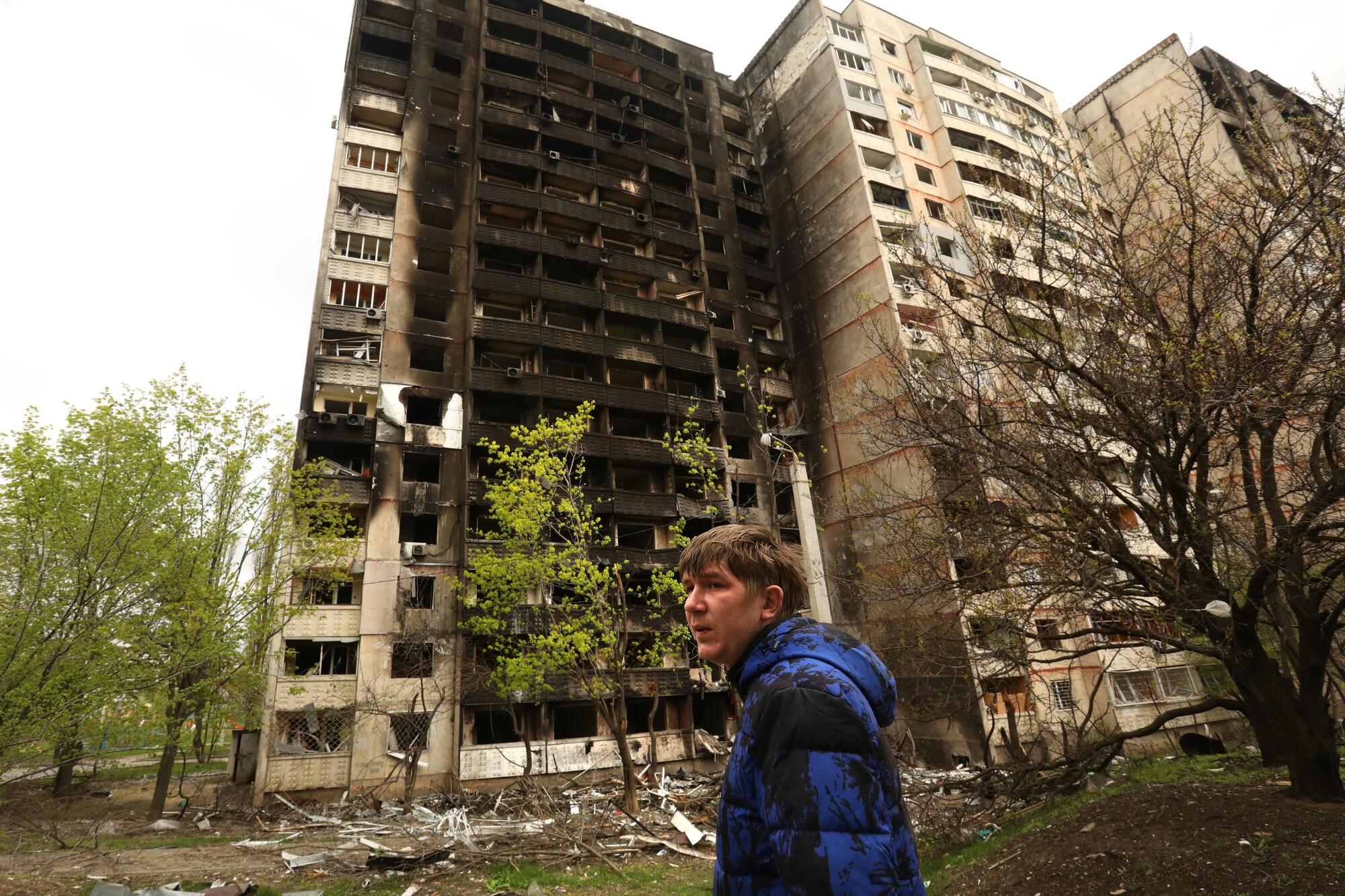
Not so for 29-year-old Gennady Krasavtsev, a builder with the red eyes and alcohol-infused breath of a heavy drinker, standing outside a nearby residential tower whose front was entirely scorched.
“The roughly 300 people still here — they’re going nowhere,” he said as he sauntered back to a playground to watch a man silently stripping branches off a tree limb with a small ax.
As for why he won’t move to a safer area just a mile away, he exhibits the fatalism common in Saltivka.
“Everywhere is dangerous. First they shoot here. Then they shoot the next square,” he said. “It’s all the same.”
In heavily bombarded Kharkiv, a Ukrainian soldier guards what’s left of a landmark building. ‘We unite and fight back,’ he says.
Others had quit their homes but not the neighborhood. The last stop on Kharkiv’s northeastern metro line, Heroiv Pratsi, now houses about 800 people on the edge of Saltivka. Within its bowels, day and night blend together. A few people venture up periodically for a smoke, or to feed chunks of stale bread to pigeons by the station entrance, but they rush back inside the moment shelling resumes.
Sleeping arrangements are improvisatory and cover every spare space near the turnstiles, stairs, platforms and subway carriages. Some try for a level of privacy and bring tents, or set up bunkbeds with covers draped over them, or fashion a cove in a subway carriage. There are fledgling attempts at creating a home: a few Lego and toys arrayed on a carriage window frame, a stuffed animal among flower-patterned pillows.
Then there are cats, such as Simba and Marek, who prowled around Katya Talpa, a 35-year-old sales agent, occasionally scratching a piece of cardboard she had brought for that purpose.
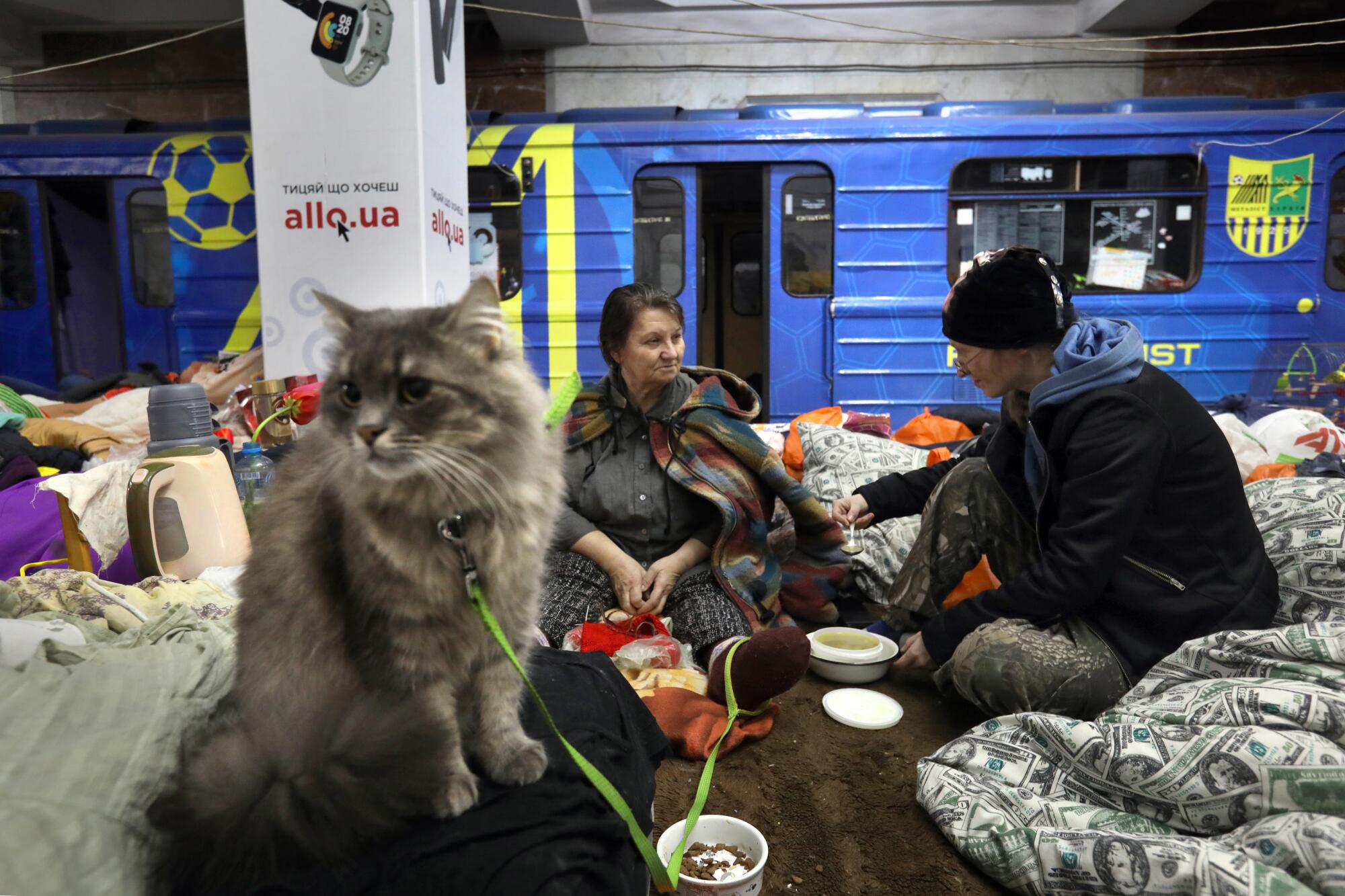
She and her husband, Yura, 42, a builder, lived nearby, and their apartment — so far — was still in good condition. But the shelling was too intense, and they’ve been sleeping in the subway since the invasion began.
“We didn’t think we’d be here so long. But we’ll leave [eventually]. We believe in our victory,” Talpa said.
Up by the ticket concourse, 36-year-old Vladimir Kravitz gave a que-sera-sera smile when asked about his home.
“Eight times the building was hit, but my apartment is fine,” he said. So dangerous is his block that he doesn’t try to visit it. Instead, he seemed fully at ease with life in the metro, sitting with a gaggle of friends and eating helpings of chicken, kasha, soup and pickled shredded carrot.
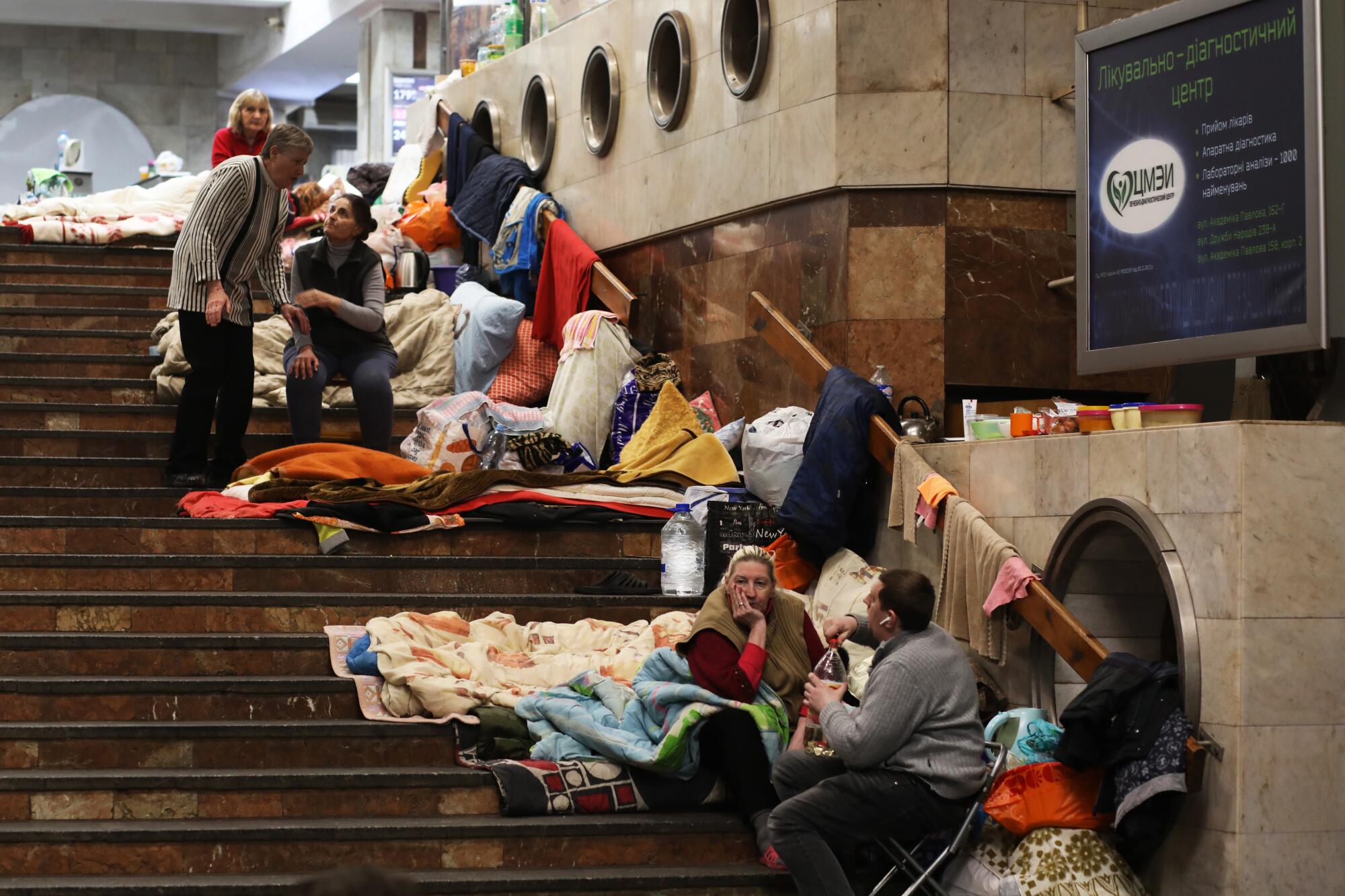
The people here are well-served, with volunteers delivering freshly cooked food three times a day from less-affected parts of Kharkiv, which have become staging grounds for a massive relief effort.
Alongside a highway approaching Kharkiv, around a half-constructed compound, Pastor Ilya Gerasim of the Holy Trinity Church oversees an aid operation that on that day was feeding upwards of 2,000 people.
“They’re afraid, depressed, desperate,” Gerasim said. “And we understand it’s our duty to help them. And preach the Gospel.”
Landmark church is a lodestar as Ukrainians mourn war dead and pray for living soldiers: ‘Here, we are all together,’ chaplain says.
Inside the compound, volunteers prepared bags of rice, kasha, fruit and cleaning products in an assembly line and handed them out to waiting recipients, some of whom began standing in line at 4 a.m.
Gerasim swung into action Feb. 24, amid the shock of a war he never expected would happen. He fielded calls from parishioners and fellow believers in Romania and elsewhere in the world seeking to help.
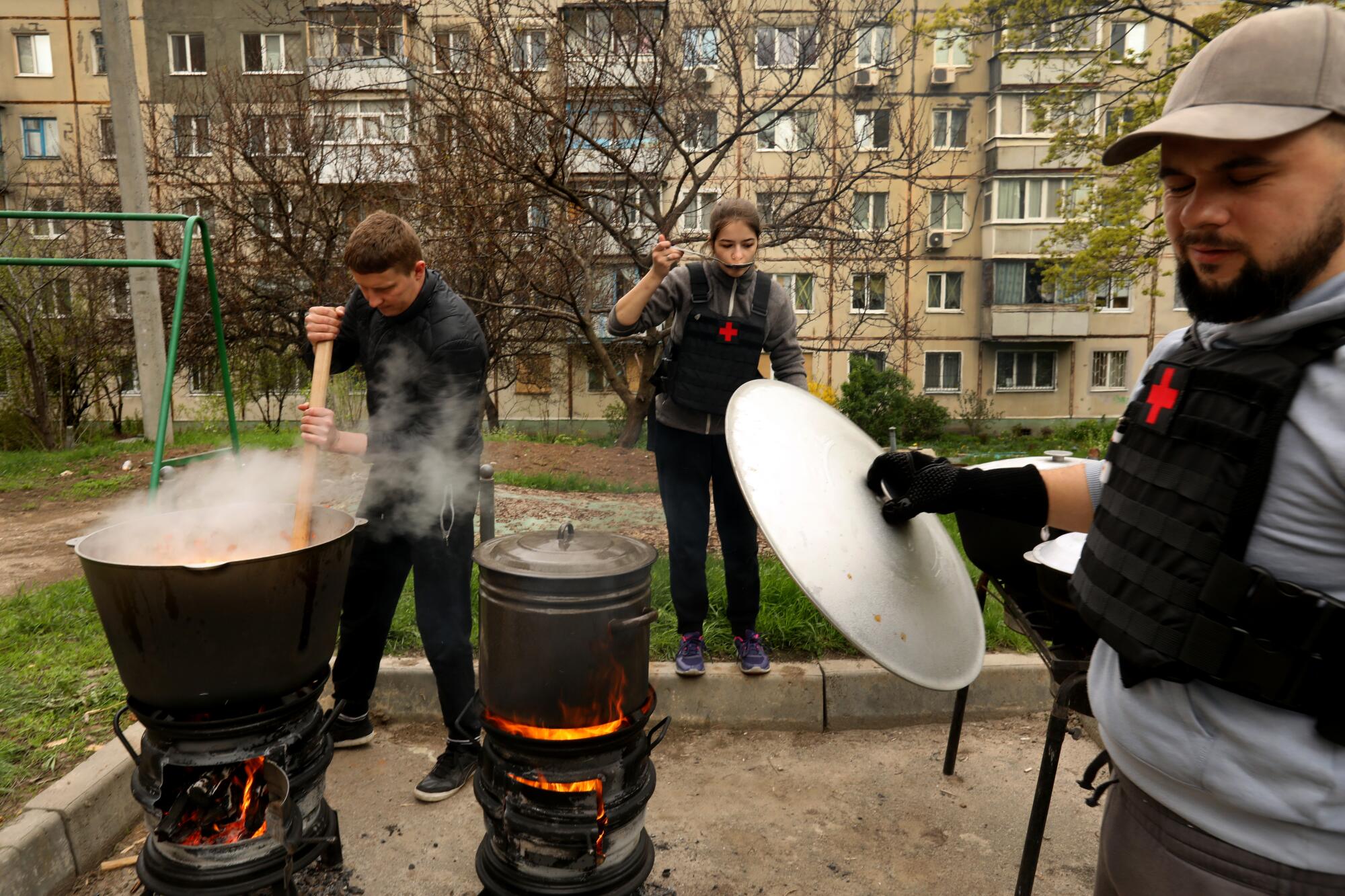
“We prayed, and I could see those people who know and need to do the job. I had a good team, so we prepared units for medicine, packaging, food and delivery,” Gerasim said.
Soon they were feeding well over 2,000 people three times a week. Since the beginning of the war, they’ve delivered tens of thousands of food packages, dispatched volunteers to cook meals in Saltivka (chefs wore flak jackets) and evacuated 11,000 people.
Another outfit is the World Central Kitchen, an aid group headed by Spanish celebrity chef José Andrés that works in 30 Ukrainian cities. In Kharkiv, its headquarters are a bar, where Roxana “Roxy” Pavlenko, 44, manages a constantly shifting menu of dishes along with a cadre of cooks. Earlier in April, a shell landed one afternoon near the bar, injuring four of the staff, according to World Central Kitchen CEO Nate Mook. Everyone still wanted to continue working there.
Among the volunteers bringing meals to war-blighted areas are Roman Knaziev, a 33-year-old physics doctoral graduate, and Anastasia Dolhoshapko, 28, who works as a travel agent; together they form a sort of Batman and Batgirl of meal-delivery assistance.
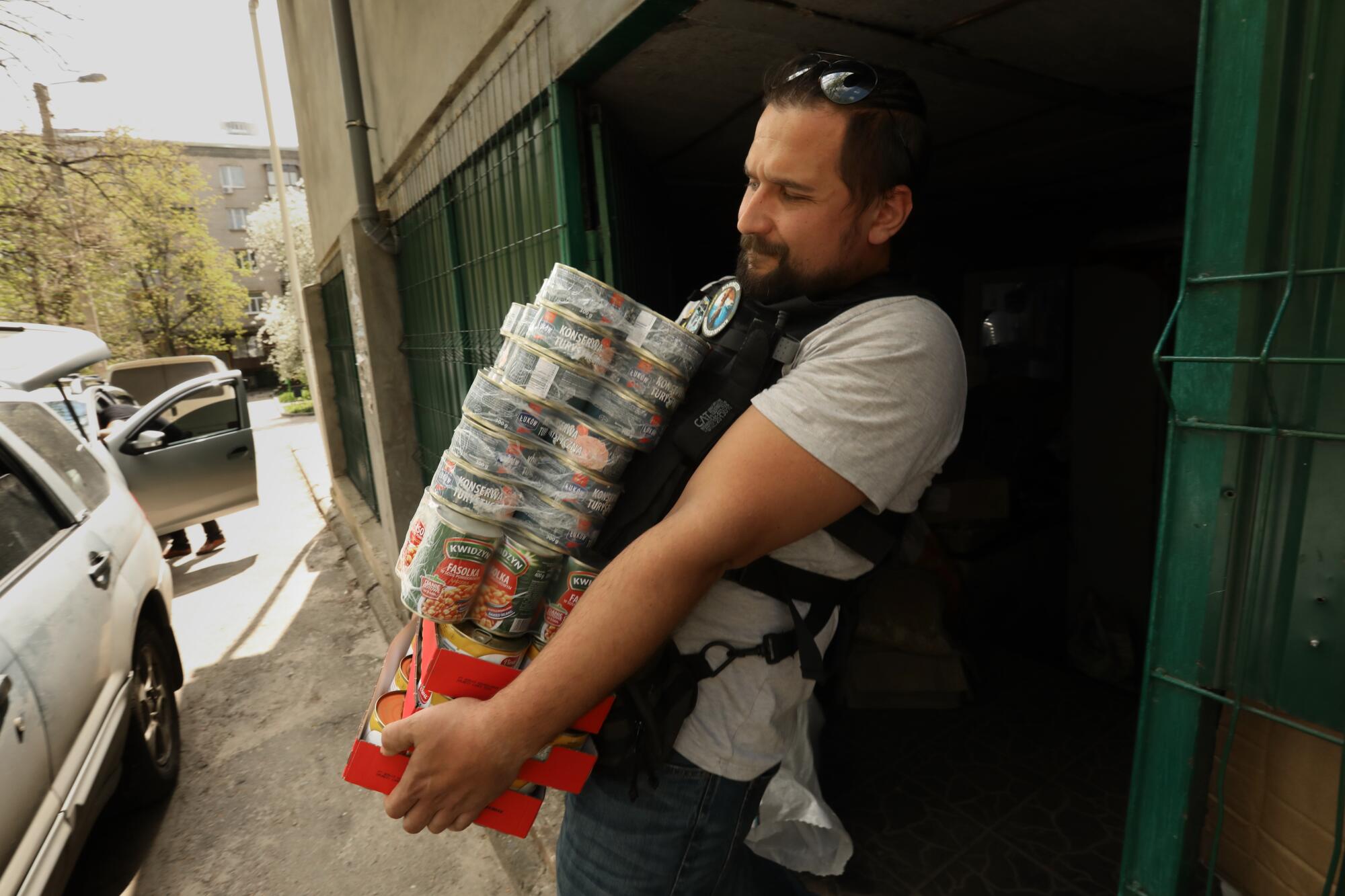
One relatively quiet afternoon — shelling had eased right after Easter — Knaziev and Dolhoshapko ferried food and medicine around the city center. Some districts here showed battle scars caused by cruise missiles, their explosive strength capable of shearing the facade off an entire building, exposing the rooms inside like a life-size dollhouse. But Knaziev proudly pointed out the area’s relatively pristine condition under the circumstances, with municipal workers landscaping a public park, collecting detritus in a truck or fixing a light damaged in the blast.
“We lost electricity here for one or two days, and that’s because the city workers repair everything, even under fire,” he said.
Such repairs wouldn’t have been done so quickly before the war, Dolhoshapko said. But the crucible-like conditions had left in Kharkiv only those who wanted to do something, to help.
Besides, she added, the shelling stopped registering for most people.
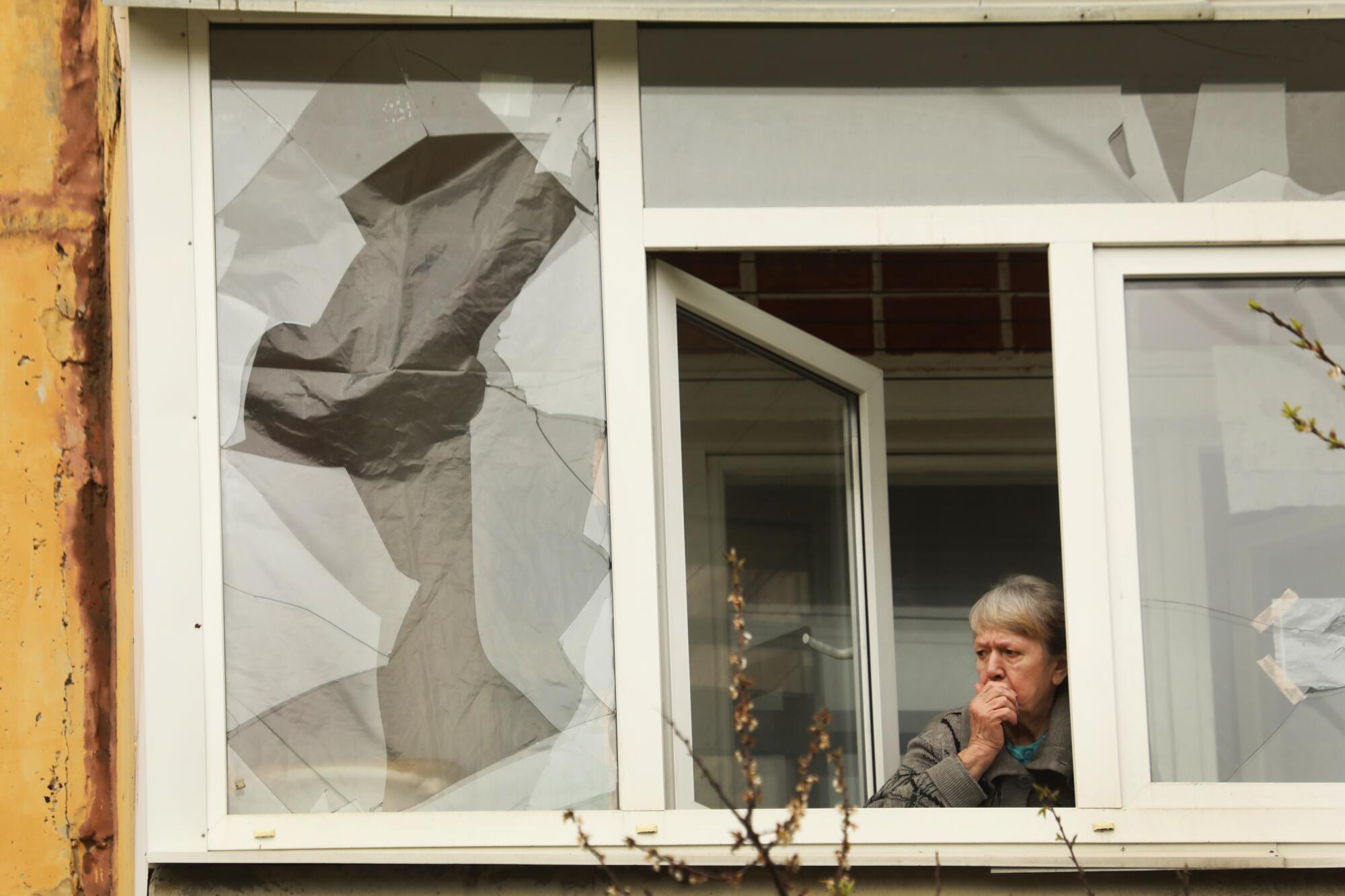
“The other day a rocket struck our neighbor’s garden and we had no idea until he told us,” she said, smiling. “We wouldn’t have noticed even if it hit our garden. We’re too busy.”
Many people in Kharkiv have become unwilling experts on ordnance, like Lena Asachya, 59, and her husband, Oleh, 58, who live in Piatykhatky, a northern neighborhood also near the front line.
“I can tell the difference between tanks, artillery, Grad [rocket launchers]. We’re all experts here,” Asachya said, as Knaziev and Dolhoshapko lugged boxes of supplies to her building’s backyard, where her husband was boiling water.
Asachya has become the caretaker for the abandoned pets on the block, feeding an assortment of cats, dogs and other animals that congregated in front of her when she fished out pet food from one of the boxes. A loud boom interrupted the conversation. Nobody flinched, not even the animals.
“We know from the sound where it’s going. That’s not close,” she said.
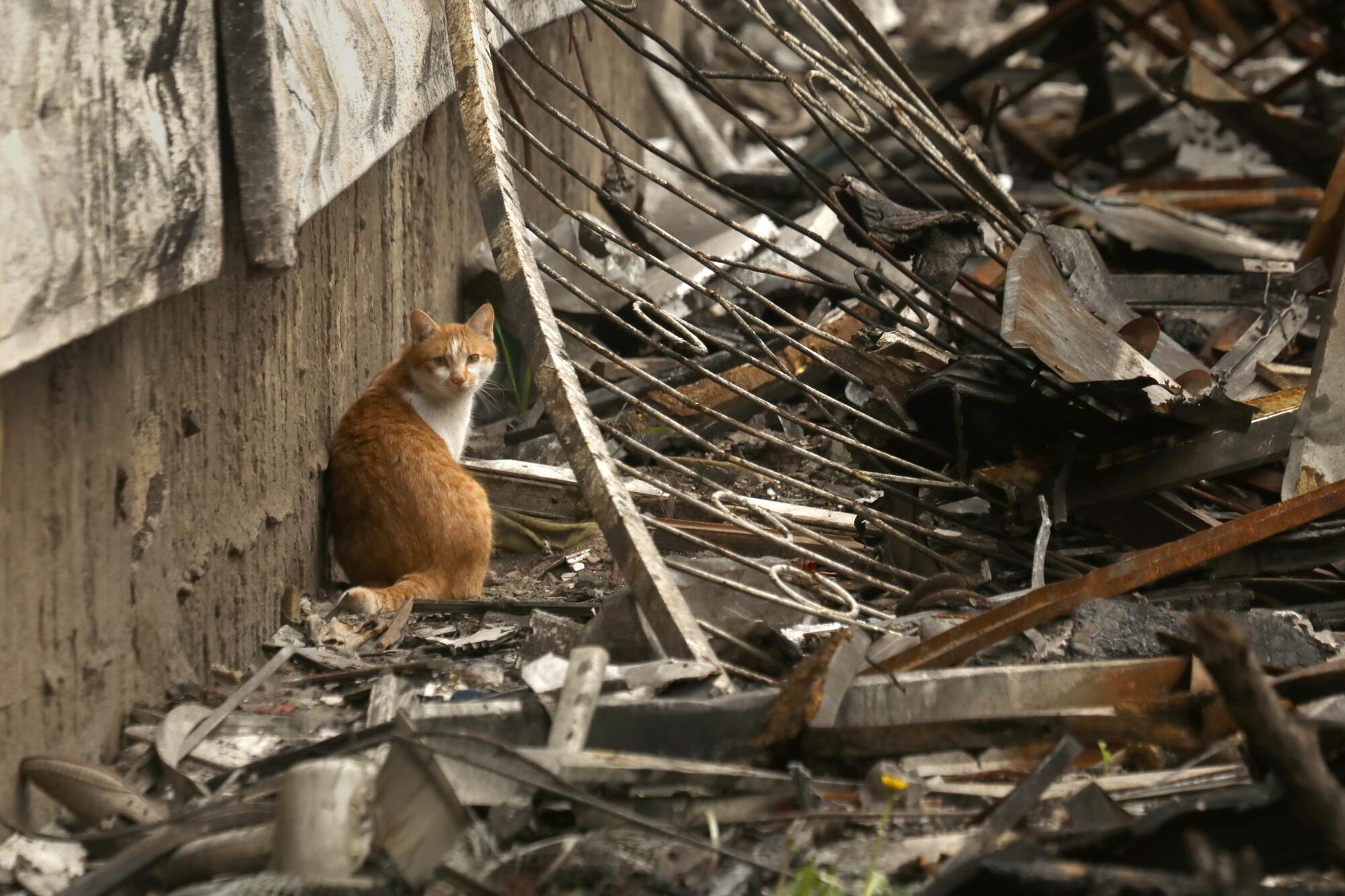
It isn’t just the animals that make her and Oleh stay. A few dozen other people continue to live on their block, and they all support each other. Oleh, who worked as a chef, is in charge of fashioning a proper meal from the donated goods. Despite the danger, Lena and Oleg rarely sleep in the basement.
“We have kind of a community here,” she said.
“I’m worried, of course. But it’s my home.”
More to Read
Sign up for Essential California
The most important California stories and recommendations in your inbox every morning.
You may occasionally receive promotional content from the Los Angeles Times.
